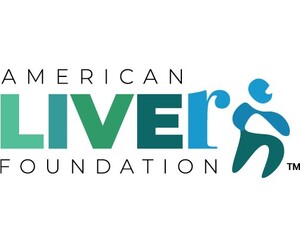Animated videos part of joint Living Donor Liver Transplant Information Center
FAIRFIELD, N.J., Sept. 1, 2022 /PRNewswire/ -- The American Liver Foundation and UPMC have launched a new, five-part animated video series to help liver transplant patients find a living donor. A recent addition to a comprehensive Living Donor Liver Transplant Information Center launched in 2020, the newly created video series helps patients and families easily understand the steps they can take to help find a living donor.
The new 60-second videos include: Living Donor Liver Transplant: An Overview, Sharing Your Story on Social Media, Tips for Sharing Your Story, Tips to Keep People Interested in Your Story, and Other Ways to Share Your Story. A complete toolkit with educational information and resources for donors and recipients is also available in the Living Donor Liver Transplant Information Center.
"The harsh reality of liver transplant is we just don't have enough organs for all of the people who need them, but we know if a live donor is available, we don't have to wait until the patient is at the top of the waiting list," said Abhinav Humar, MD, division chief of transplantation surgery at UPMC. "Each year more than 2,000 patients die while on the waitlist, and others are removed from the list because they become too sick to undergo the operation. On average, patients receive a living donor liver within three months, while others could be on the deceased donor list for a year or more."
"As diseases like nonalcoholic fatty liver disease (NAFLD) and nonalcoholic steatohepatitis (NASH) become more common, the need for liver transplantation will continue to grow," said Lorraine Stiehl, Chief Executive Officer of American Liver Foundation. "Our goal is to help patients and families understand how to find a living donor and this new video series, combined with our other robust resources, makes that process just a little bit easier."
With living donor liver transplantation, a donor can give a portion of their liver to the patient. The liver is the only organ that can regrow, so just a portion is needed for transplant. Before donating, the donor's doctor will run tests including blood work and physical and psychological exams, to ensure the donor is a good match and that they are well enough for surgery. For the transplant, a donor will spend about a week in the hospital and within two to three months their liver will grow back to full, functioning size and so will the liver in the newly transplanted patient. For more information visit www.liverfoundation.org/livingdonor.
ALF and Transplantation
Advancing transplantation as an available treatment option for liver patients is a priority for ALF. We work to address this through a focus on four areas: public awareness, public policy, professionals and patients.
- For public awareness, in addition to information available at liverfoundation.org and through the Living Donor Liver Transplant Information Center, ALF regularly hosts educational webinars for patients and families. ALF also has a Helpline at 1-800-465-4837 and a live chat with information specialists available to answer questions about liver disease prevention, diagnosis and treatment options, such as transplant. ALF can direct callers to local services in their area, help them learn about clinical trials and help callers find physicians. Interpretation services are also available for non-English speakers.
- In public policy, ALF works to advance transplantation through our advocacy efforts on Capitol Hill, by supporting the Living Donor Protection Act which seeks to address barriers to living donation, and through our summer advocacy campaign, Lend Your Voice.
- ALF has also formed a transplant workgroup of healthcare professionals and experts in liver transplantation to examine how to increase the number of and access to living donor liver transplants, break down barriers, utilize learnings from successes in living kidney transplantation and encourage innovation.
- Likewise, ALF has a transplant workgroup of patients to examine the barriers that patients and caregivers experience with transplant, the learnings from which will be incorporated into future patient programming and related transplant strategies.
About Liver Disease:
Your liver is essential to your life. It is the largest solid internal organ in the body. It is about the size of a football and weighs about 3 to 3.5 pounds (1.36–1.59kg). It is located on your right side, just under your rib cage. The liver performs many vital functions, including filtering toxins from your blood, managing blood clotting, making bile to digest fat, storing sugar for energy, turning extra glucose into glycogen, making protein for blood plasma, and helping with digestion.
There are many kinds of liver diseases and conditions, the most common are hepatitis viruses, nonalcoholic fatty liver disease (NAFLD), autoimmune diseases, genetic conditions, cancer, and others. More than 100 million people in the U.S. have some form of liver disease. Approximately 4.5 million U.S. adults (1.8%) have been diagnosed with liver disease. But it is estimated that 80-100 million adults in the U.S. have fatty liver disease, and many do not know they have it. Research estimates that fatty liver disease is present in up to 75% of overweight people and in more than 90% with severe obesity. Globally, it affects one billion people. In 2020, 51,642 adults in the U.S. died from liver disease (15.7 per 100,000 population). Find more information about Liver Disease.
About UPMC
A $24 billion health care provider and insurer, Pittsburgh-based UPMC is inventing new models of patient-centered, cost-effective, accountable care. The largest nongovernmental employer in Pennsylvania, UPMC integrates more than 92,000 employees, 40 hospitals, 800 doctors' offices and outpatient sites, and a more than 4 million-member Insurance Services Division, the largest medical insurer in western Pennsylvania. In the most recent fiscal year, UPMC contributed $1.5 billion in benefits to its communities, including more care to the region's most vulnerable citizens than any other health care institution, and paid more than $900 million in federal, state, and local taxes. Working in close collaboration with the University of Pittsburgh Schools of the Health Sciences, UPMC shares its clinical, managerial, and technological skills worldwide through its innovation and commercialization arm, UPMC Enterprises, and through UPMC International. U.S. News consistently ranks UPMC Presbyterian Shadyside among the nation's best hospitals in many specialties and ranks UPMC Children's Hospital of Pittsburgh on its Honor Roll of America's Best Children's Hospitals. For more information, go to UPMC.com.
About the American Liver Foundation
The American Liver Foundation is the nation's largest non-profit organization focused solely on promoting liver health and disease prevention. The American Liver Foundation achieves its mission in the fight against liver disease by funding scientific research, education for medical professionals, advocacy, information and support programs for patients and their families as well as public awareness campaigns about liver wellness and disease prevention. The mission of the American Liver Foundation is to promote education, advocacy, support services and research for the prevention, treatment and cure of liver disease. For more information visit liverfoundation.org or call:1 800 GO LIVER (800-465-4837).
Contact: Julie Kimbrough
[email protected]
Direct dial: 646-737-9409
Facebook
Twitter
LinkedIn
YouTube
Instagram
SOURCE American Liver Foundation

WANT YOUR COMPANY'S NEWS FEATURED ON PRNEWSWIRE.COM?
Newsrooms &
Influencers
Digital Media
Outlets
Journalists
Opted In





Share this article